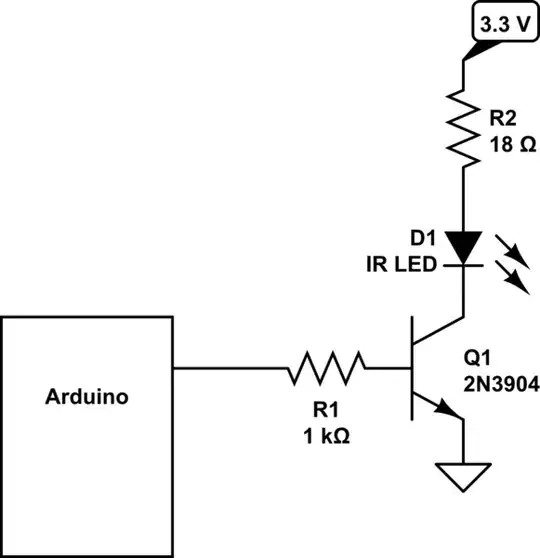What i saw is that the led use 1.3V on 100mA with a 1:10 Cycle (100ms). Im currently at 30mA using only a 100 resistor, but the range of the led is 20cm at max, i want to get at least 2 meters.
Since i know the max output of the Arduino pin is 40mA i need to use a transistor to get the 100 i want. And that is the problem, i read a lot about how transistors works but i can't yet understand how can i achieve 100mA using a transistor.
I did the math using 5v and got 37R.
Is this correct? So i need to use a 37 ohms resistor to get the 100mA i want?
And this resistor is going between the digital input and the transistor base, correct?
Im using a NPN 2n2222 and reading the datasheet 100mA is easy job for this transistor.
I appreciate any help.
